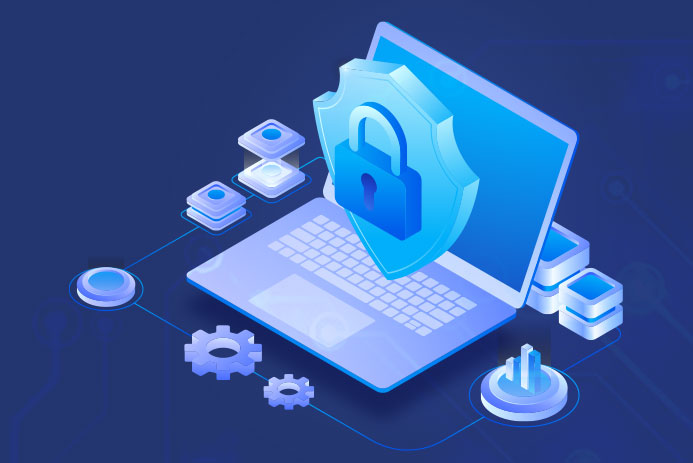As the world becomes increasingly interconnected, web applications and application programming interfaces (APIs) have become central to enterprise operations. The increase in their uptake has, unfortunately, made them susceptible to cyber threats. Web applications, due to their constant availability for uninterrupted service provision, are highly vulnerable to hacking attempts. Likewise, according to a report by Marsh McLennan, the average annual API-related total global cyber loss totalled US$ 41-75 billion (Rs. 3.3 – 6.1 trillion).
WAAP Solutions offer a robust and user-friendly platform for controlling and automating a company’s operations. In this article, we will look at their benefits and the best practices for implementing and utilising them.
The Evolution Of WAAP
Web Application and API Protection (WAAP) is an anti-attack security solution. Businesses can protect their web applications and APIs against widespread threats with WAAP’s configurable security rules.
Over the years, Web Application and API Protection has evolved as the premier solution for businesses to protect their online applications. With a WAAP solution, businesses can safeguard customer information and prevent targeted attacks on their online applications. It was initially developed to aid companies in preventing unwanted access to their websites by keeping intruders at bay. Today, WAAP-as-a-service is used to prevent data leakage and ensure the safety of online APIs.
Benefits Of Using WAAP-As-A-Service For Businesses
- Improved Scalability: Web Application and API Protection-as-a-service can help enterprises expand their business without worrying about cyber-attacks and data breaches. It also offers enterprises scalability and flexibility to accommodate evolving business needs as it can be implemented in different settings, including on-premises, cloud, and hybrid environments.
- Enhanced Security: WAAP-as-a-service also offers the added advantage of making a company more secure. When risks like data theft and hacker intrusion become increasingly challenging for businesses, WAAP-as-a-service can come to their rescue. Protecting your company from these dangers will lessen the likelihood of private data being stolen or misused.
- Cost Savings: Businesses can save big on security-related expenditures like personnel and software by switching to WAAP-as-a-service. In addition, organisations can save costs by preventing data breaches by encrypting important information.
Factors To Consider When Selecting A WAAP Solution
- Technology: Technology is a significant factor to consider when looking for a Web Application and API Protection solution. Look for the most advanced technology, and it should be such that it can integrate with the existing technology infrastructure.
- Performance: In the case of applications that need both high throughput and low latency, a WAAP solution with purpose-built hardware may be the best option. Scalability also becomes a critical factor if the size or complexity of the application is likely to grow over time.
- Support: Features, system compatibility, and service quality are important factors when deciding on your organisation’s Web Application and API Protection solution. Businesses should also think about whether they require a particular feature or might get by with a cheaper alternative.
- Cost: When deciding on a WAAP solution, cost is one of the most critical factors. It is essential to locate a remedy that is both practical and within your price range. The cost of licensing, upgrades, and maintenance should be included.
- Peace of Mind: The degree of worry-free operation is crucial in selecting a WAAP solution. Enterprises must ensure they can manage their most important tasks without worrying or stressing the IT team. It implies that personnel won’t have to fret about their information being stolen or compromised. All user information in WAAP-as-a-service is encrypted and stored safely. It assures that the data will stay secure in case of a breach.
Cloud-powered WAAP
Thanks to cloud-based deployment approach, businesses can use web application security from any place with an internet connection. This deployment option is the most convenient and economical since it does not need client installation or upkeep of WAAP software.
Since it’s SaaS-based, there are no infrastructure requirements like:
Configuring Servers
It means that any server with access to the internet may be used for its deployment. The platform may also grow to support a large number of users. In addition, it may function without servers or other supporting infrastructure.
Setting Up Databases
It’s easier than you would expect to set up a database in a SaaS environment. The software’s administration console helps configure the utmost settings. With this, creating and maintaining a database is significantly simpler and quicker.
Monitoring Performance
It can function locally or on the cloud and is compatible with Windows and Mac. The simple interface also makes it easier to track performance.
Web Application and API Protection is an effective software for streamlining processes and automating routine tasks. Its many advantages include shorter processing times, higher levels of precision and productivity, and lower overall costs. WAAP Solutions’ deployment options are flexible and may be tailored to meet specific requirements – using cloud-based solutions, putting them in place locally, or utilising hybrid models that blend the two are all standard practices.
Yotta’s Managed Web Application & API Protection solution protects businesses’ online assets from the evils of the cyber world. It safeguards digital assets and customer data against new and existing threats, across various environments irrespective of the application architecture in use.







